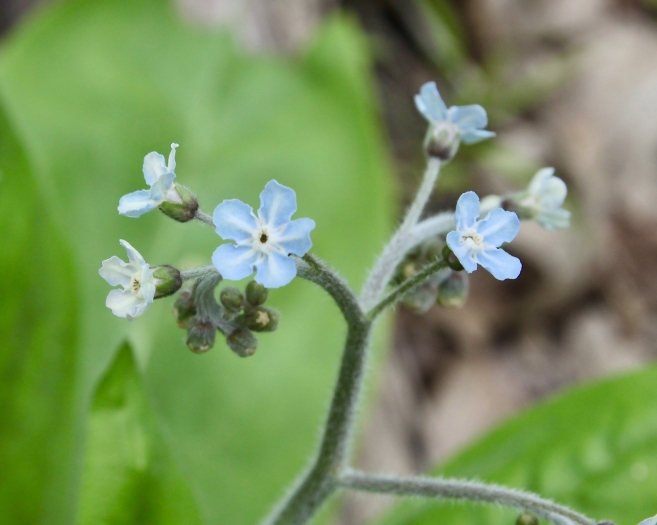Southern Wild Comfrey
(Andersonglossum virginianum)
Southern Wild Comfrey (Andersonglossum virginianum)
/
/

Fluff Berger
CC BY-SA 4.0
Image By:
Fluff Berger
Recorded By:
Copyright:
CC BY-SA 4.0
Copyright Notice:
Photo by: Fluff Berger | License Type: CC BY-SA 4.0 | License URL: http://creativecommons.org/licenses/by-sa/4.0/ | Rights Holder: Fluff Berger | Publisher: iNaturalist | Date Created: 2023-05-12T19:01:42-07:00 |



















Estimated Native Range
Summary
Andersonglossum virginianum, commonly known as Southern Wild Comfrey or Blue Houndstongue, is a perennial herb native to a variety of habitats including open uplands, deciduous woodlands, and forest edges in the eastern United States, ranging from New York to Florida and west to Illinois and Oklahoma. It typically grows to a height of 1-3 feet (0.3-0.9 meters) and is known for its erect, unbranched form. The plant has rough, hairy leaves and produces light blue to violet flowers with five deep lobes, which are quite showy during its flowering season from May to June. The flowers give way to nutlets that are barbed, allowing them to adhere to animals and clothing for dispersal.
Southern Wild Comfrey is valued for its attractive flowers and its ability to thrive in a variety of soil conditions, from moist to dry, and in both full sun and partial shade. It is often used in native plant gardens, woodland gardens, and as part of naturalized areas where its flowers can provide visual interest and support for pollinators. While it has no major disease problems, it can be susceptible to rust. In terms of cultivation, it is relatively low-maintenance, requiring minimal watering once established. Historically, it was used medicinally to treat wounds and internal disorders, though it is not commonly used for these purposes today.CC BY-SA 4.0
Southern Wild Comfrey is valued for its attractive flowers and its ability to thrive in a variety of soil conditions, from moist to dry, and in both full sun and partial shade. It is often used in native plant gardens, woodland gardens, and as part of naturalized areas where its flowers can provide visual interest and support for pollinators. While it has no major disease problems, it can be susceptible to rust. In terms of cultivation, it is relatively low-maintenance, requiring minimal watering once established. Historically, it was used medicinally to treat wounds and internal disorders, though it is not commonly used for these purposes today.CC BY-SA 4.0
Plant Description
- Plant Type: Herb
- Height: 1-3 feet
- Width: 1-2 feet
- Growth Rate: Moderate
- Flower Color: Blue
- Flowering Season: Spring
- Leaf Retention: Deciduous
Growth Requirements
- Sun: Full Sun, Part Shade
- Water: Medium
- Drainage: Medium
Common Uses
Bee Garden, Butterfly Garden, Low Maintenance
Natural Habitat
Open uplands, deciduous woodlands, and forest edges
Other Names
Common Names: Virginia Hound’s Tongue, Southern Hound’s Tongue, Southern Wild Comfrey
Scientific Names: , Andersonglossum virginianum, Cynoglossum amplexicaule, Cynoglossum lucidum, Cynoglossum virginianum, Cynoglossum virginicum,
GBIF Accepted Name: